Forums
- Forums
- Duggy's Reference Hangar
- RAF Library
- Handley Page Hampden/Hereford
Handley Page Hampden/Hereford
Post a reply
- Go to Previous topic
- Go to Next topic
- Go to Welcome
- Go to Introduce Yourself
- Go to General Discussion
- Go to Screenshots, Images and Videos
- Go to Off topic
- Go to Works in Progress
- Go to Skinning Tips / Tutorials
- Go to Skin Requests
- Go to IJAAF Library
- Go to Luftwaffe Library
- Go to RAF Library
- Go to USAAF / USN Library
- Go to Misc Library
- Go to The Ops Room
- Go to Made in Germany
- Go to Campaigns and Missions
- Go to Works in Progress
- Go to Juri's Air-Raid Shelter
- Go to Campaigns and Missions
- Go to Works in Progress
- Go to Skinpacks
- Go to External Projects Discussion
- Go to Books & Resources
-
6 years agoFri Jul 25 2025, 09:06amDuggy
 Main AdminDevelopment
Main AdminDevelopment
Origins
In 1932, the Air Ministry issued Specification B.9/32 seeking a twin-engined day bomber with higher performance than any preceding bomber aircraft. Accordingly, Handley Page responded with their design to meet the requirements of B.9/32; this same specification also drew other submissions from rival aircraft manufacturer such as Vickers, who would proceed to develop the Wellington bomber to it. The design team, led by G.R. Vokert, drafted an extremely radical aircraft, initially centering upon the politically-favoured Rolls-Royce Goshawk engine; however, by mid-1934, development of the Goshawk looked less promising and thus the Air Ministry acted to relax the tare weight requirement of the specification, allowing for the use of heavier and more powerful radial engines such as the Bristol Perseus and Bristol Pegasus. According to aviation author Philip J.R. Moyes, the Handley Page design soon found support with the Air Ministry in part because it was judged to represent a fair compromise between range, payload, and speed.
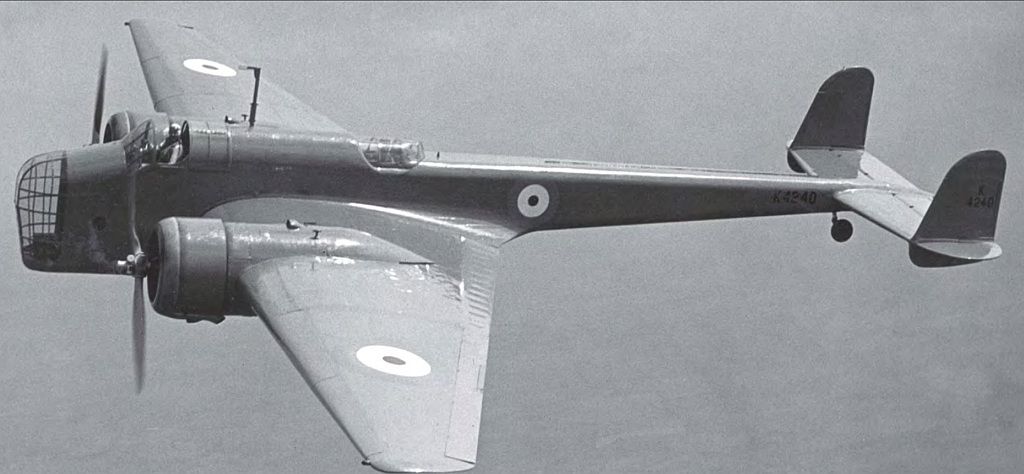
During early 1936, the first prototype, designated as the HP.52 and given the serial number K4240, was completed. On 21 June 1936, the prototype, powered by a pair of Bristol Pegasus P.E.5S(A) engines, conducted its maiden flight from Radlett Aerodrome, Hertfordshire, piloted by Handley-Page Chief Test Pilot Major J. L. H. B. Cordes. In late June 1936, the prototype was put on public display at New Types Park, Hendon, London. In August 1936, in response to the successful flight trials performed by K4240, the Air Ministry issued an initial production order for the type, ordering 180 production aircraft to be manufactured to meet Specification B.30/36; concurrently, a second order for 100 aircraft powered by the Napier Dagger was issued to Belfast-based Short & Harland.
In early 1937, a second prototype, which received the serial number L7271, was completed; this second prototype had several differences from the first, including the pitot tube being repositioned below the fuselage, a more rounded ventral gun turret, and a slightly modified nose. L7271 later received a pair of Dagger engines and was accordingly re-designated as the HP.53; on 1 July 1937, it performed its first flight after having received the new engines.
Another prototype, L4032, was produced to serve as the production-standard prototype; on 24 June 1938, the third prototype conducted its maiden flight. L4032 differed from the previous two prototypes in that it was powered by a pair of Pegasus XVIII engines, the nose incorporated an optically-flat bomb-aiming panel, as well as the ventral and dorsal gun positions being revised.
Handley Page elected to name their new aircraft after John Hampden, a 17th-century British politician and defender of civil liberties.[2] On 24 June 1938, L4032 was officially christened by Lady Katharine Mary Montagu Douglas Scott, Viscountess Hampden, at a ceremony held in Radlett Aerodrome, the same day on which its first flight took place. L4032 and L4033, which was the second production-standard Hampden to be produced, would be later assigned to the Aeroplane and Armament Experimental Establishment at RAF Martlesham Heath, Suffolk. On 20 September 1938, the third production Hampden, designated L4034, following the completion of handling trials conducted by the Central Flying School at Upavon Aerodrome, Wiltshire, become the first aircraft to enter RAF squadron service, being delivered to No. 49 Squadron.
Production
By late 1938, the mass manufacturing plans for the Hampden had been formalised. In addition to Handley-Page's own production line, the type was to be built under subcontract by English Electric at their factory in Preston, Lancashire; on 6 August 1938, English Electric was awarded an initial contract to manufacture 75 Hampdens. In addition, Canadian interest in domestic production of the type had resulted in the establishment of the joint Anglo-Canadian Canadian Associated Aircraft company, which promptly received an initial order from the RAF for 80 Hampdens to be completed in Canada; this facility would effectively act as a shadow factory during wartime. On 1 September 1938, in response to interest expressed by the Royal Swedish Air Force (RSAF) in the Hampden, including in a potential licence production arrangement for 70 aircraft to be built in Sweden, a single production Hampden was supplied to Sweden. Designated P.5 by the RSAF, it was operated by the service through to November 1945, after which it was sold to Svenska Aeroplan AB (SAAB) to serve as a flying testbed before being retired in late 1947.

On 22 February 1940, the first Preston-built Hampden, P2062, conducted its maiden flight. English Electric would go on to manufacture a total of 770 Hampdens, more than any other company, prior to delivering its final aircraft on 15 March 1942. In July 1940, Handley-Page terminated its own production line for the Hampden upon the completion of its 500th aircraft. On 9 August 1940, the first Canadian-built Hampden, P5298, made its first flight; by October 1940, Canadian production had risen to 15 aircraft per month. A total of 160 Hampdens were completed by Canadian Associated Aircraft, many of which were ferried to the United Kingdom for wartime service. The final Canadian-built aircraft was delivered in late 1941.
Design
The Hampden Mk I had a pilot, navigator/bomb aimer, radio operator and rear gunner. Conceived as a fast, manoeuvrable "fighting bomber", the Hampden had a fixed forward-firing .303 in (7.7 mm) Browning machine gun in the upper part of the fuselage nose. To avoid the weight penalties of powered turrets, the Hampden had a curved Perspex nose fitted with a manual .303 in (7.7 mm) Vickers K machine gun and a .303 in (7.7 mm) Vickers K installation in the rear upper and lower positions. The layout was similar to the all-guns-forward cockpits introduced about the same time in Luftwaffe medium bombers, notably the Dornier Do 17. During the Norwegian Campaign, these guns proved to be thoroughly inadequate for self-defence in daylight; the single guns were replaced by twin Vickers K guns, a process led by Air Vice Marshal Arthur Harris of No. 5 Group RAF in 1940.
The Hampden had a flush-rivetted stressed skin, reinforced with a mixture of bent and extruded sections in an all-metal monocoque design. A split-assembly construction technique was employed: sections were prefabricated and then joined, to enable rapid and economic manufacture. The fuselage was in three big sections ? front, centre and rear ? that were built using jigs. The centre and rear sections were made of two halves, which meant that the sections could be fitted out in part under better working conditions prior to assembly. All possible assembly work was performed at the benches prior to installation upon each aircraft.
The wings were made up of three large units: centre section, port outer wing and starboard outer wing, which were also subdivided. Each section was built around a main girder spar, leading edge section and trailing edge section. The wing made use of wingtip slots and hydraulically-actuated trailing edge flaps; the flaps and ailerons had stress-bearing D-spars. According to Moyes, the configuration of the wing was a key feature of Hampden, being highly tapered and designed to exert low levels of drag; these attributes were responsible for the aircraft's high top speed for the era of 265 mph (230 kn; 426 km/h) while retaining a reasonably low landing speed of 73 mph (63 kn; 117 km/h).
The Hampden's flying qualities were typically described as being favourable; Moyes described it as being "extraordinarily mobile on the controls". Pilots were provided with a high level of external visibility, assisting the execution of steep turns and other manoeuvres. The control layout required some familiarisation, as some elements such as the hydraulic controls were unassuming and unintuitive. Upon introduction, the Hampden exhibited greater speeds and initial climb rates than any of its contemporaries while still retaining favourable handling qualities.
The slim and compact fuselage of the aircraft was quite cramped, wide enough only for a single person. The navigator sat behind the pilot and access in the cockpit required folding down the seats. Once in place, the crew had almost no room to move and were typically uncomfortable during long missions. Aircrews referred to the Hampden by various nicknames due to this, such as Flying Suitcase, Panhandle, and Flying Tadpole.
UK service
In September 1938, No. 49 Squadron received the first Hampdens; by the end of the year, both 49 and 83 Squadrons at RAF Scampton had re-equipped with the type. A total of 226 Hampdens were in service with ten squadrons by the start of the Second World War, with six forming the operational strength of 5 Group of Bomber Command based in Lincolnshire.
With the outbreak of war in 1939, Hampdens were initially used to perform armed aerial reconnaissance missions, observing German naval activity during daylight. However, despite its speed and manoeuvrability, the Hampden proved to be no match for Luftwaffe fighters; in December 1939, Bomber Command is claimed to have discarded the belief that aircraft such as the Hampden could realistically operate by day and instead chose to predominantly deploy them under the cover of darkness during nighttime operations. During 1940, Hampdens of 5 Group conducted 123 nighttime airborne leaflet propaganda missions, losing only a single aircraft in the process.
On 13 April 1940, days after Germany's invasion of Norway, a large number of Hampdens were dispatched on night-time mine-laying (code-named "gardening") flights in the North Sea in areas deemed unapproachable by British shipping. According to Moyes, this activity proved highly effective, experiencing a low casualty rate of less than 1.9 aircraft per sortie. The Hampden also saw a return to its use as a daytime bomber during the Norwegian Campaign, but quickly proved to be under-gunned to fend off German fighters.
On 19 March 1940, Hampdens took part in the first deliberate bombing of German soil in a nighttime raid upon the seaplane hangars and slipways in H?rnum, Sylt. The type continued to operate at night on bombing raids over Germany. Flight Lieutenant Rod Learoyd of 49 Squadron was awarded the Victoria Cross for the attack that he led on the Dortmund-Ems canal on 12 August 1940. On 25 August 1940, Hampdens from various squadrons participated in the RAF's first bombing raid on Berlin. Sergeant John Hannah was the wireless operator/air gunner of an 83 Squadron Hampden and was awarded the Victoria Cross on 15 September 1940, when he fought the flames of the burning aircraft, allowing the pilot to return it to base.
In April 1942, the Hampden-equipped 144 Squadron and 455 Squadron RAAF were transferred from Bomber Command to Coastal Command to perform the torpedo bomber role. Later that year, detachments from both squadrons were dispatched to Vaenga, Murmansk, Russia, to help safeguard the Arctic convoys in the vicinity. A total of four squadrons assigned to Coastal Command would be equipped with Hampdens. These squadrons continued to use the type into late 1943; the last Coastal Command squadron transitioned from the type on 10 December 1943.
Almost half of the Hampdens built, 714, were lost on operations, with 1,077 crew killed and 739 reported as missing. German Flak accounted for 108, one hit a German barrage balloon, 263 Hampdens crashed because of "a variety of causes" and 214 others were classed as "missing". Luftwaffe pilots claimed 128 Hampdens, shooting down 92 at night.
The last Bomber Command sorties by Hampdens were flown on the night of 14/15 September 1942 by 408 Squadron, RCAF against Wilhelmshaven. After being withdrawn from Bomber Command in 1942, it operated with RAF Coastal Command through 1943 as a long-range torpedo bomber (the Hampden TB Mk I with a Mk XII torpedo in an open bomb bay and a 500-pound (230 kg) bomb under each wing) and as a maritime reconnaissance aircraft.
Non-UK service
The Hampden was also used by the Royal Canadian Air Force (RCAF), Royal Australian Air Force (RAAF), Royal New Zealand Air Force (RNZAF), Aviatsiya Voenno-Morskogo Flota (AV-MF: Maritime Military Fleet Aviation) of the Soviet Union and the Swedish Flygvapnet (Air Force).
The Hampden in RCAF service included the 160 examples manufactured in Canada by the Victory Aircraft consortium. Of the total built, 84 were shipped by sea to Great Britain, while the remainder came to Patricia Bay (Victoria Airport) B.C., to set up No. 32 OTU (RAF) used for bombing and gunnery training. Typical exercises at 32 OTU consisted of patrolling up the West Coast of Vancouver Island at night or flying out into the Pacific to a navigational map co-ordinate, often in adverse and un-forecast inclement weather. Due to attrition from accidents, about 200 "war weary" Hampdens were later flown from the U.K. to Pat Bay as replacements.
In Operation Orator, during September 1942, the crews of 32 Hampden TB.1 torpedo bombers from No. 144 Squadron RAF and No. 455 Squadron RAAF flew to Northwest Russia, to protect arctic convoy PQ 18 from German surface vessels, such the battleship Tirpitz. The Hampden crews flew from Sumburgh in the Shetland Islands to Vaenga (Vayenga; later known as Severomorsk) in Murmansk Oblast, Russia. This was a hazardous route, often subject to poor weather and spanning more than 2,100 nautical miles (3,900 km), partly over enemy-occupied territory in Norway and Finland. Eight Hampdens were lost or damaged beyond repair en route. 144 and 455 Squadrons flew a small number of sorties from Vaenga. While it was originally intended that the Hampdens would be flown back to Scotland, the prevailing west-east headwinds on such a flight might have pushed the Hampdens beyond their maximum endurance and it was decided to transport the wing's personnel back to Britain by sea and gift the Hampdens to the Soviet Navy.
Aircrews and mechanics from Maritime Military Fleet Aviation (Aviatsiya Voenno-Morskogo Flota; VMF) were trained by members of 144 and 455 Squadrons, before their return to Britain in October. The 3rd Squadron, 24th Mine-Torpedo Aviation Regiment operated the "balalaika" ? the Russian nickname for the Hampden, in reference to its unusual shape ? until mid-1943, when losses, a lack of replacements and a shortage of spares forced its retirement. 24 MTAP then reverted to the Ilyushin DB-3/Ilyushin Il-4.
Variants
The Hampden was powered by two 980 hp (730 kW) Bristol Pegasus XVIII nine-cylinder radial engines. A Mk II variant, designated the HP.62, was developed by converting two Hampdens to use the 1,000 hp (750 kW) Wright Cyclone engine in 1940, but no further work was done on that project.[19]
Interest in the HP.52 by the Swedish Air Force led to the creation of the HP.53 prototype, which was subsequently used as a testbed for a pair of 1,000 hp (750 kW) Napier Dagger VIII 24-cylinder H-block air-cooled inline engines.
In August 1936, the Air Ministry placed an order for 100 Hampdens equipped with the Dagger engine. Those aircraft subsequently received the designation HP.53, along with the name Hereford.
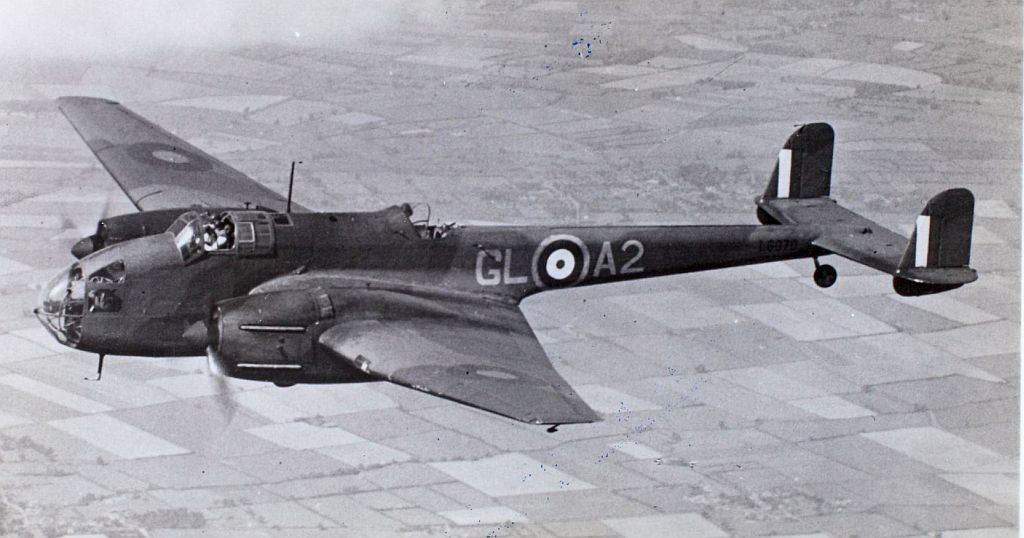
Manufactured by Short & Harland in Belfast, their performance was almost identical to that of their Hampden cousins, but there were problems with the engines. From the outset, the Dagger engine proved to be problematic, being both noisy and unreliable. In particular, cooling problems plagued the engine while being run on the ground, resulting in distortions and premature failures.The problems were not satisfactorily resolved, with the result that most of the Herefords on order were converted to Hampdens instead, while those that were constructed were often re-engined to become Hampdens. A limited number of Herefords did enter squadron service, but were only used as crew trainers by training units.
Below Hampden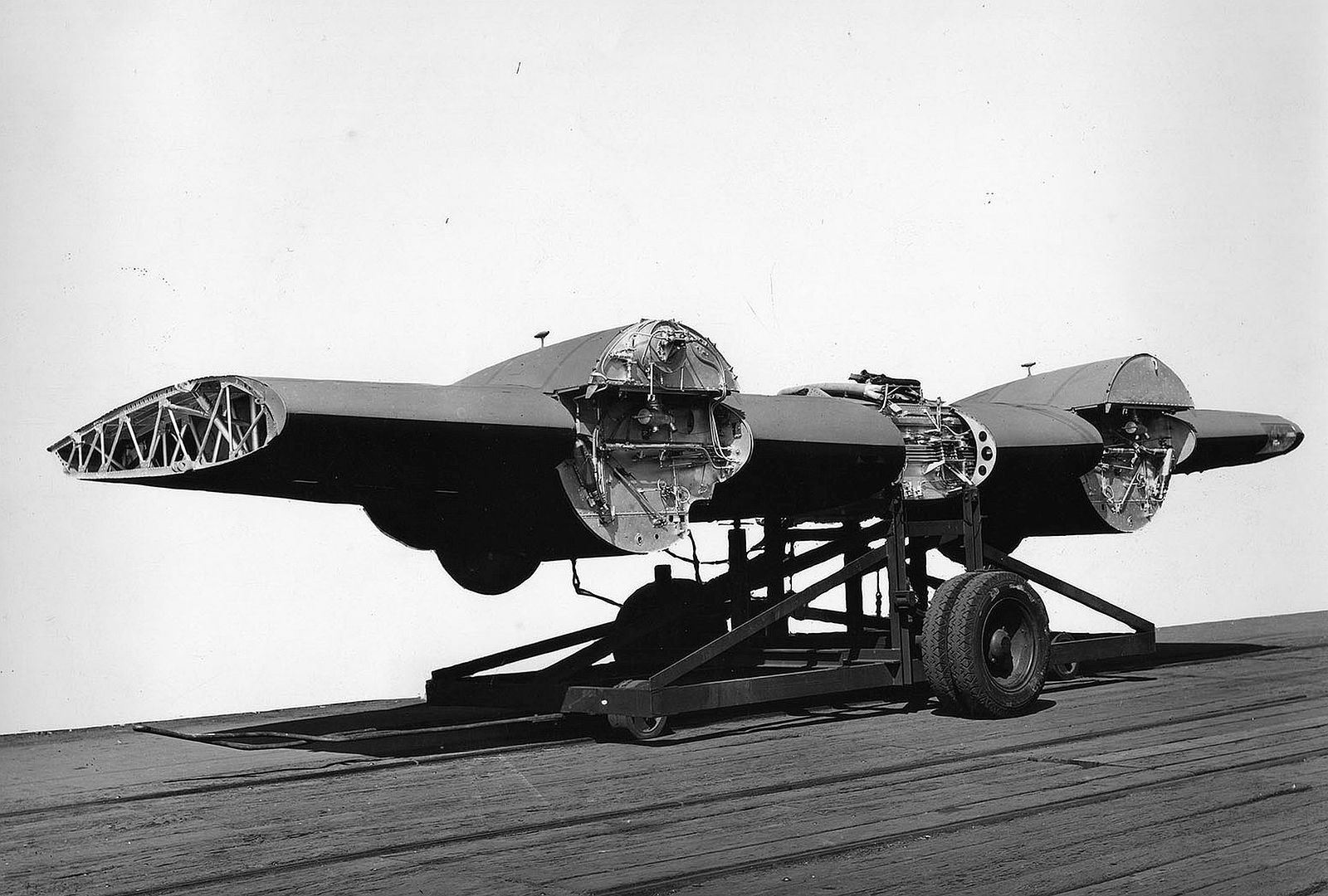
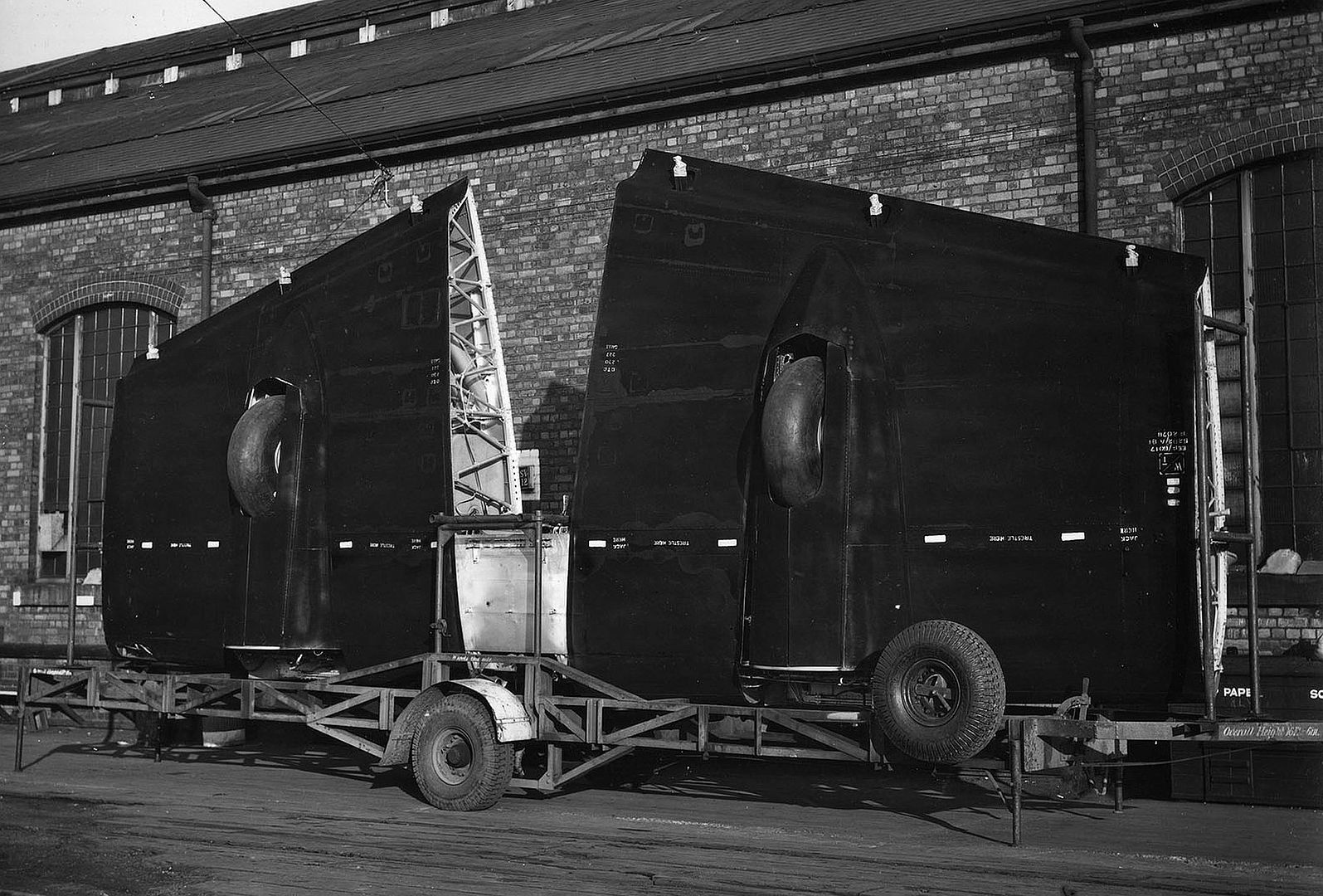
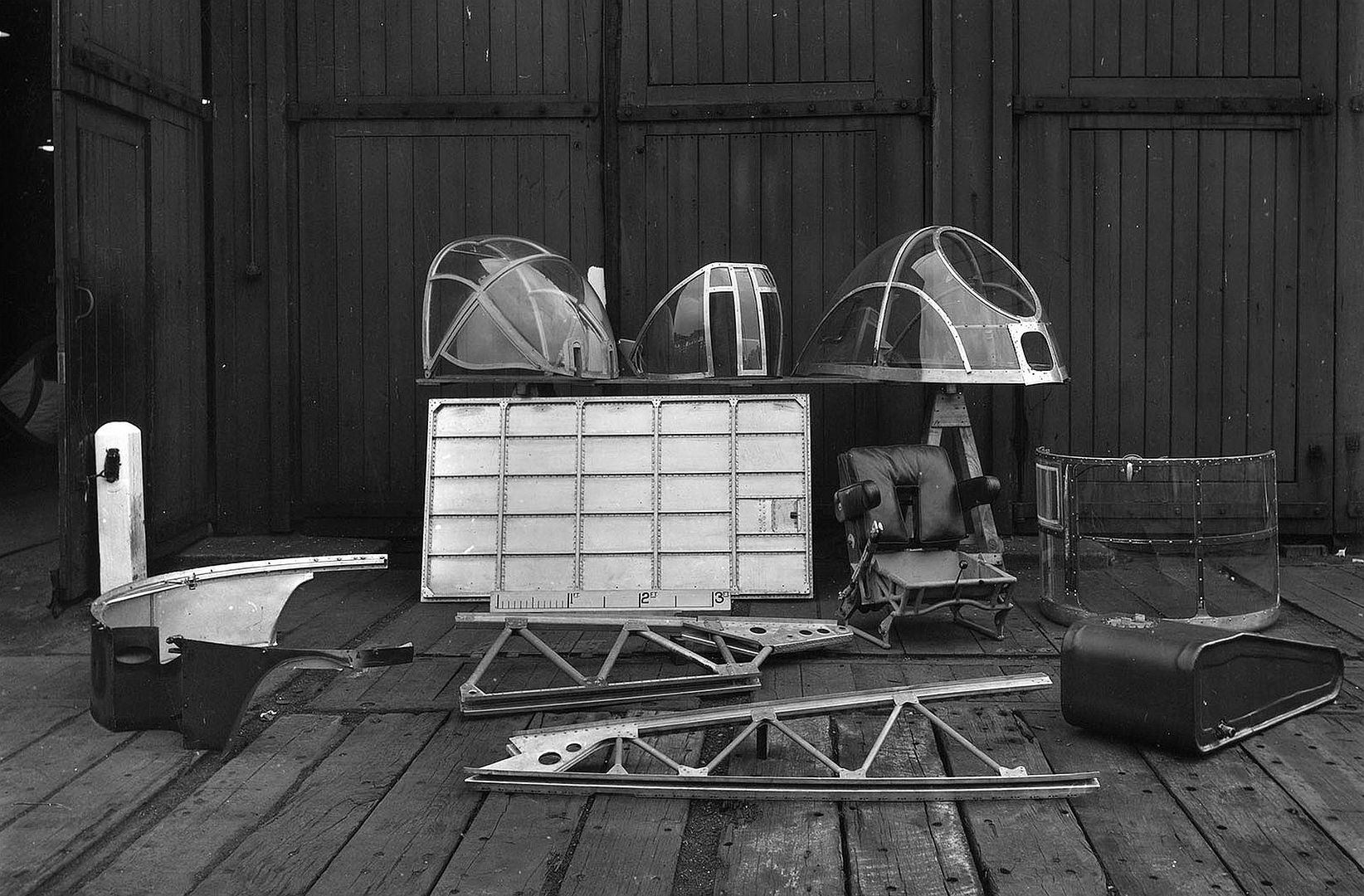
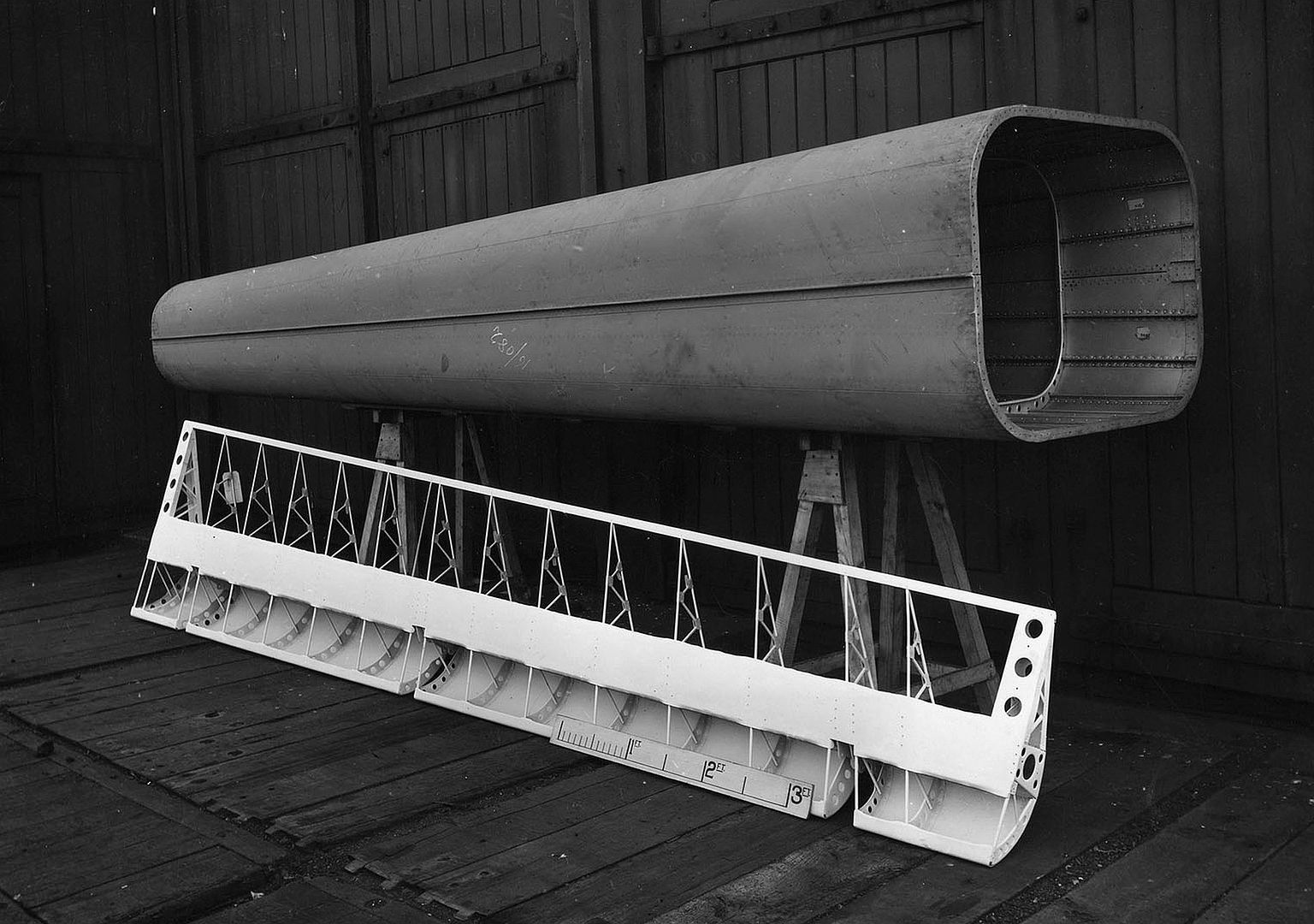
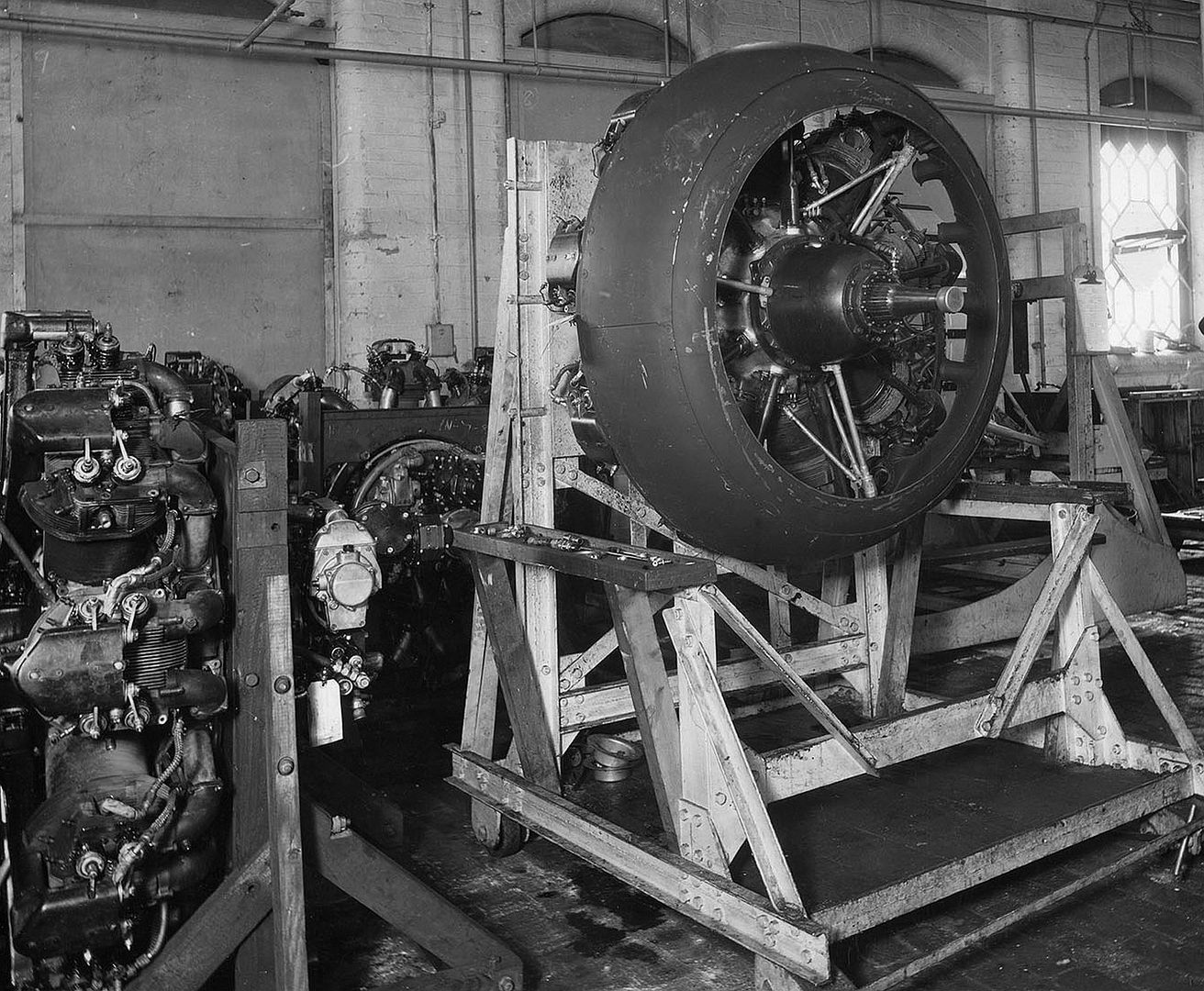
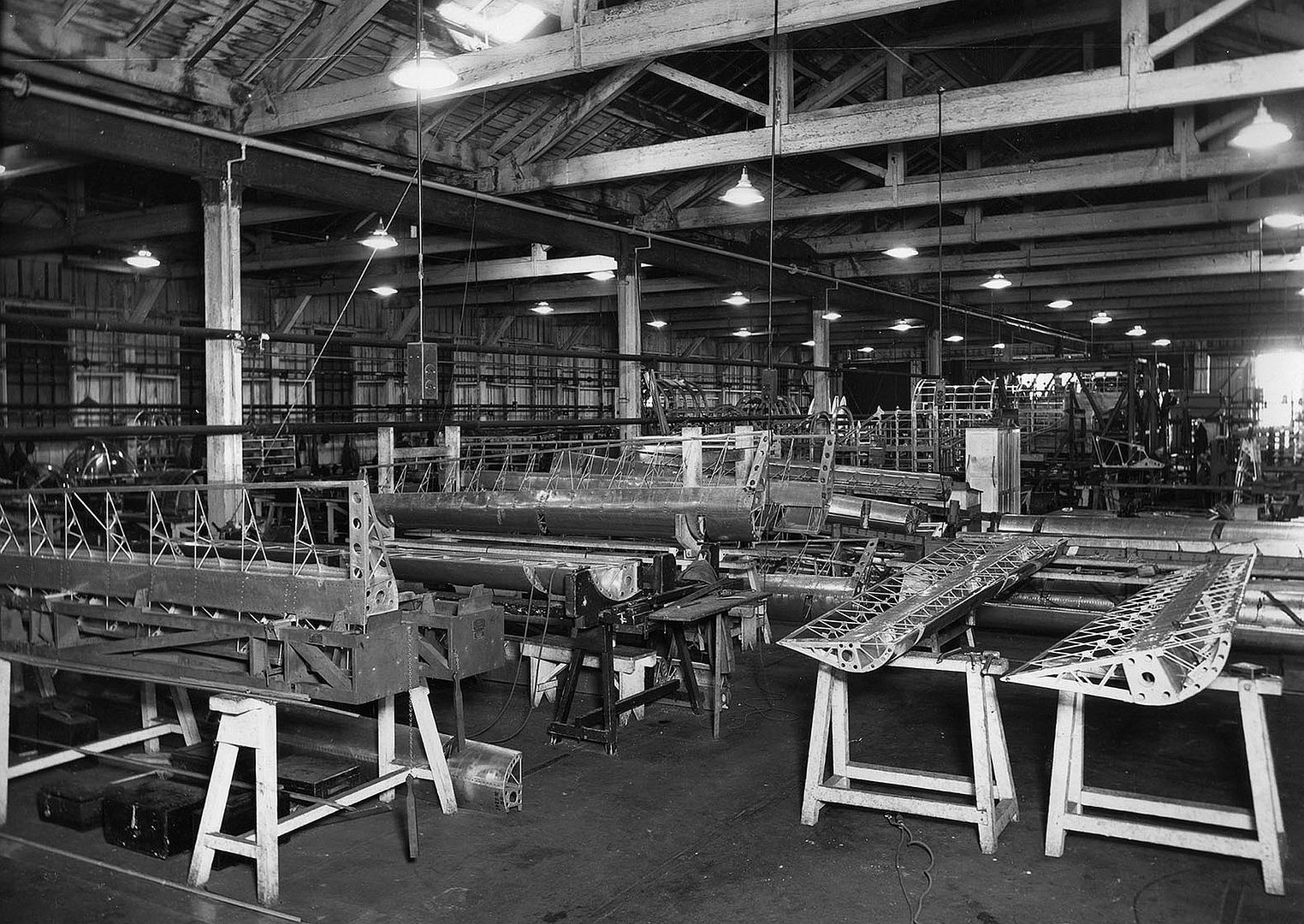
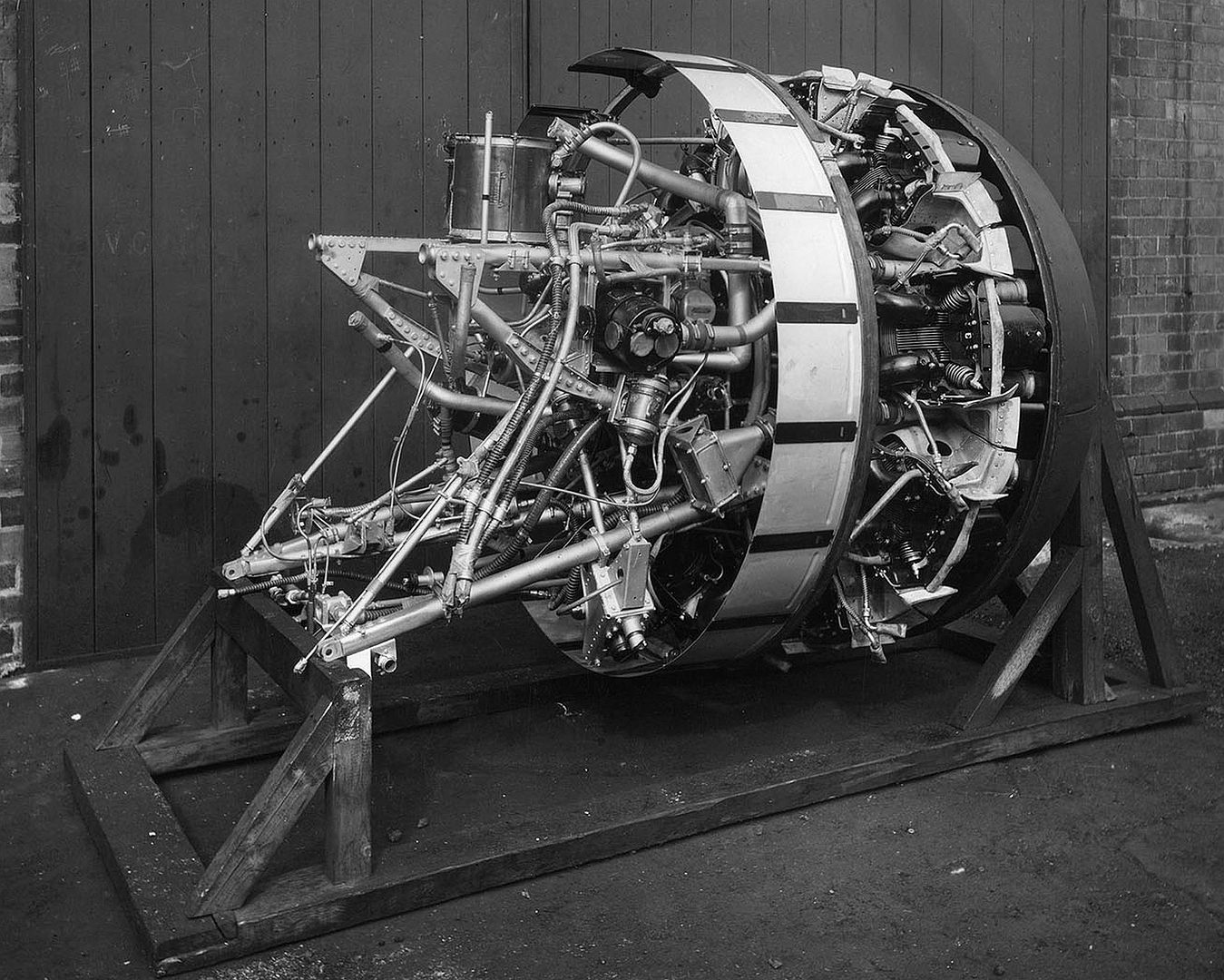
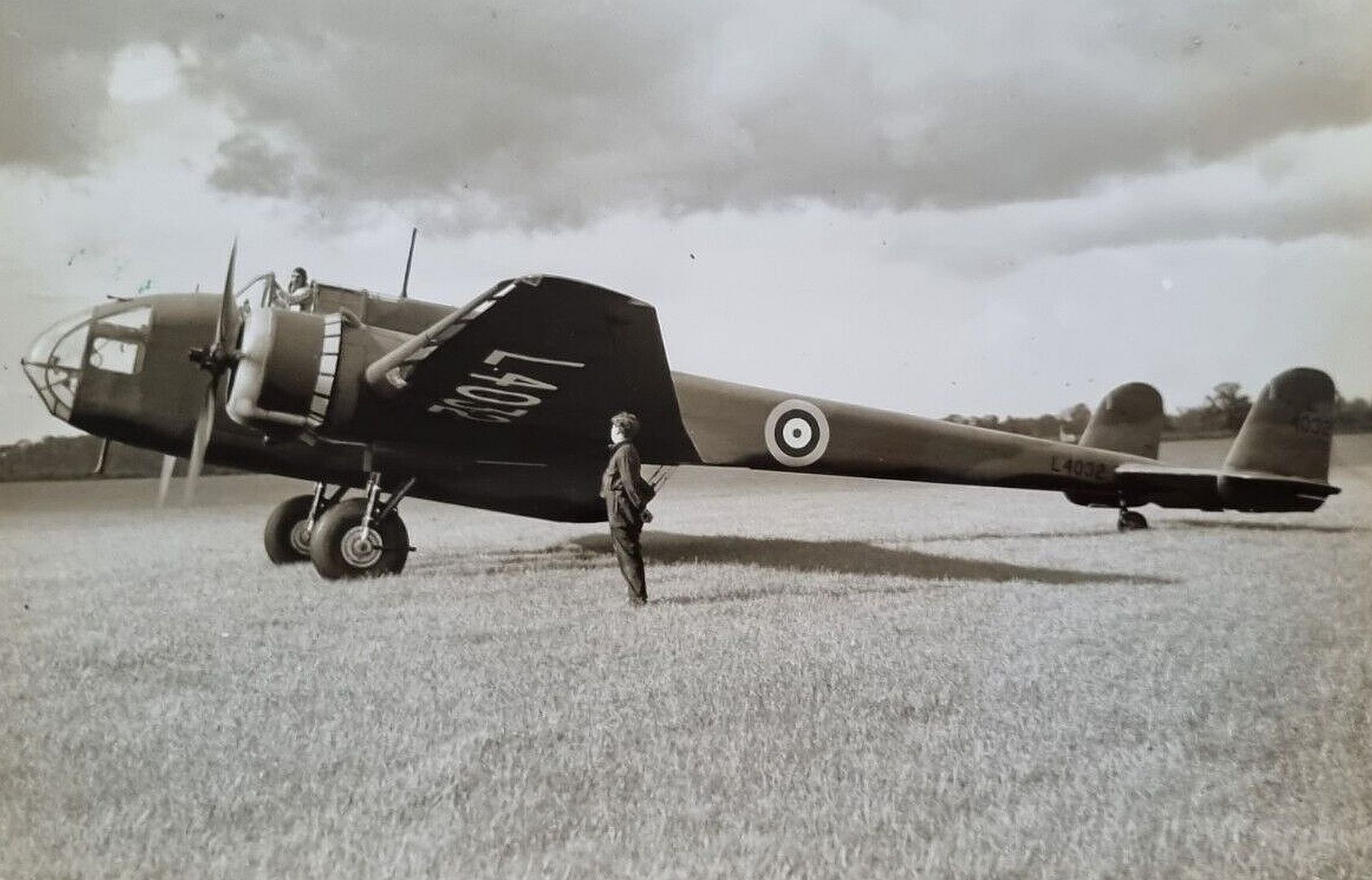
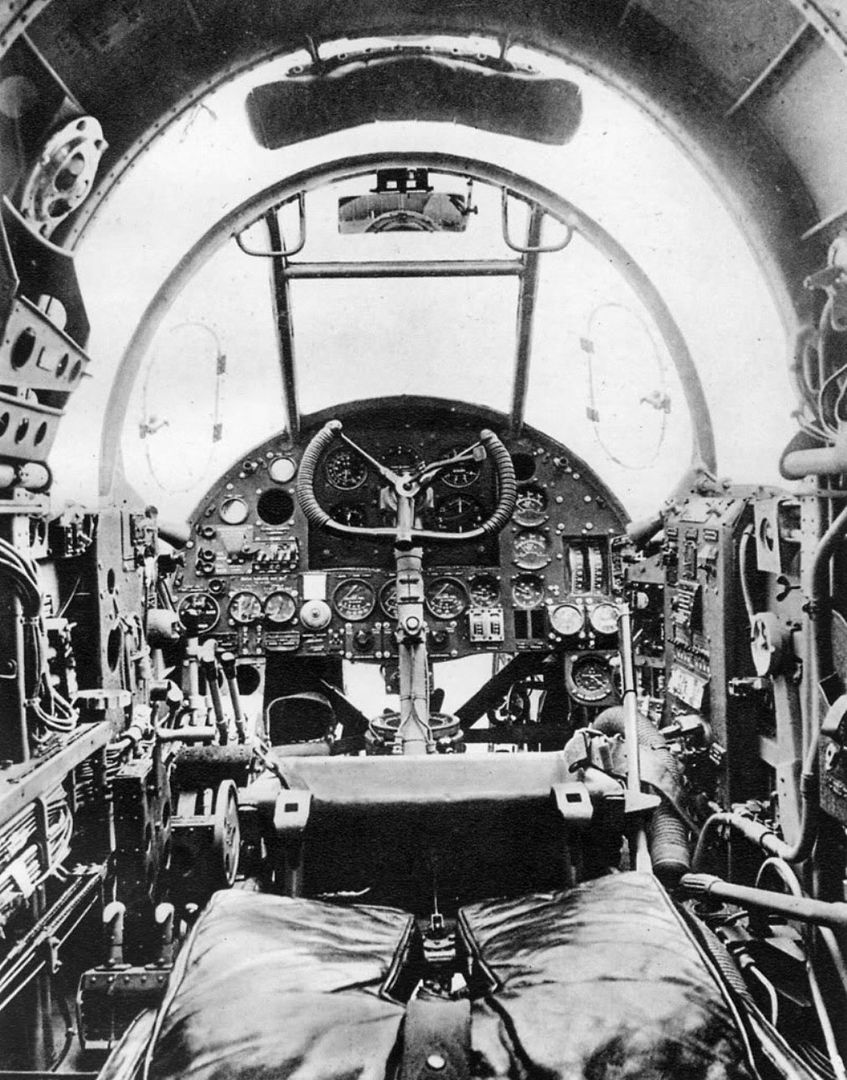
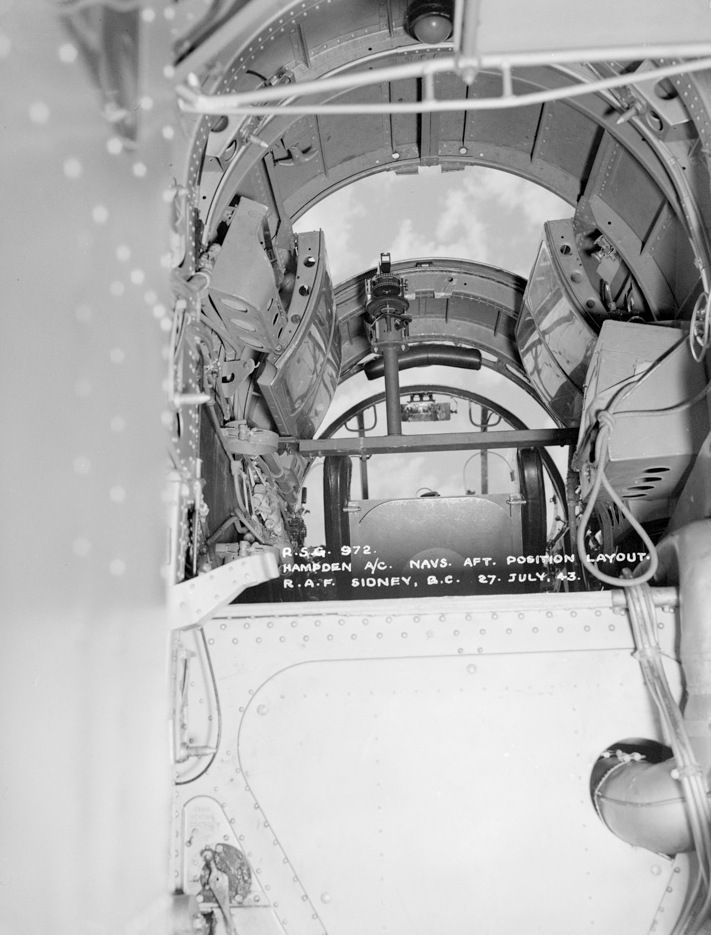

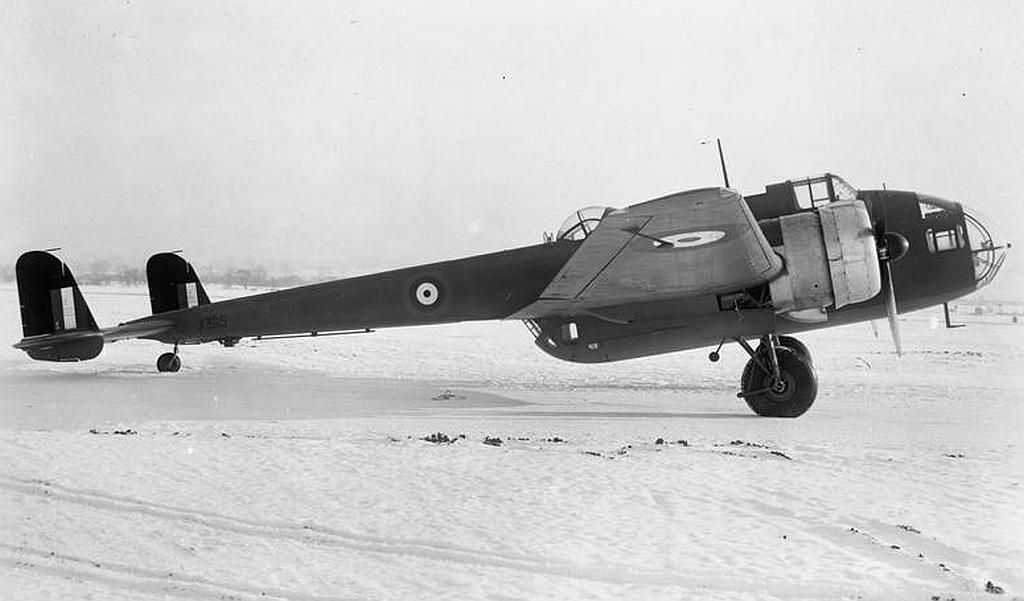
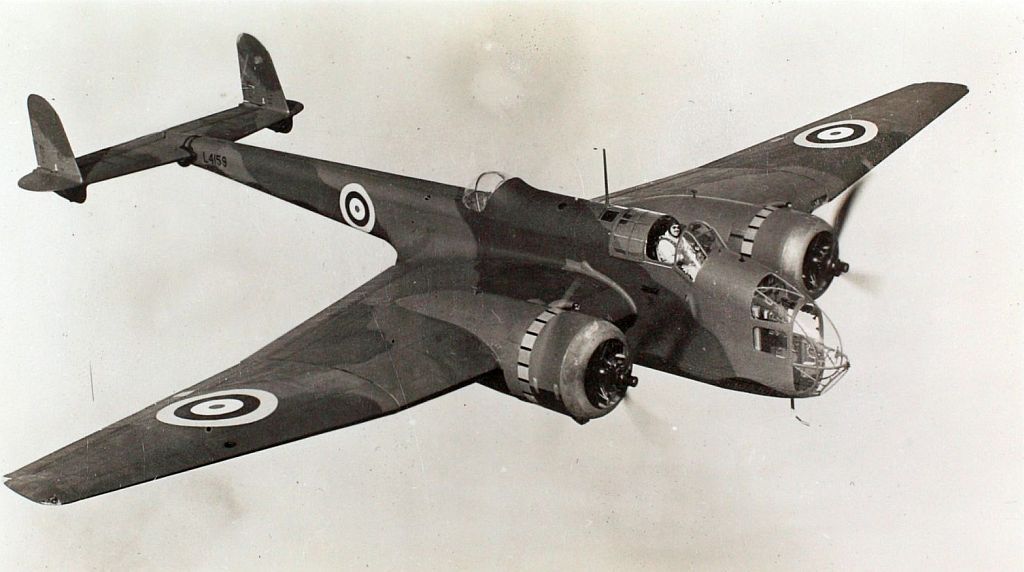
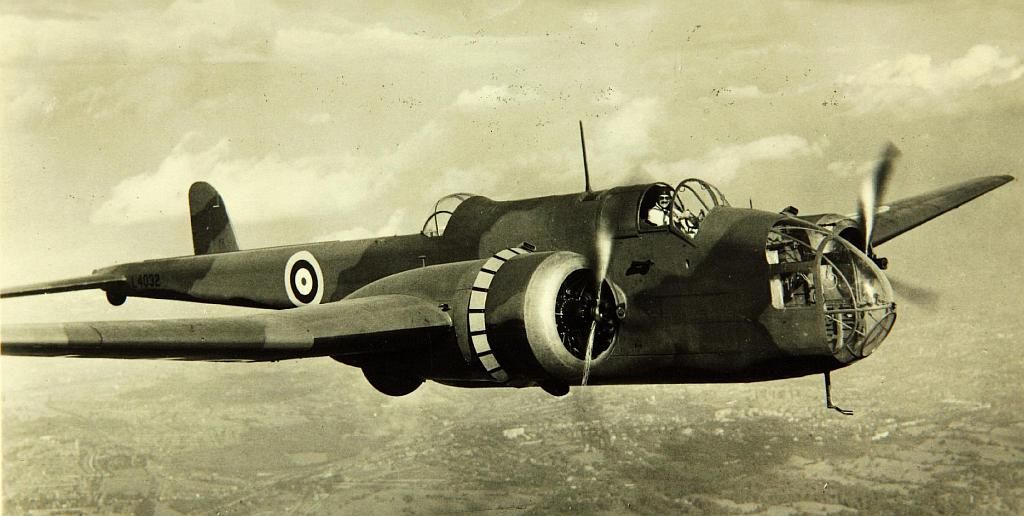
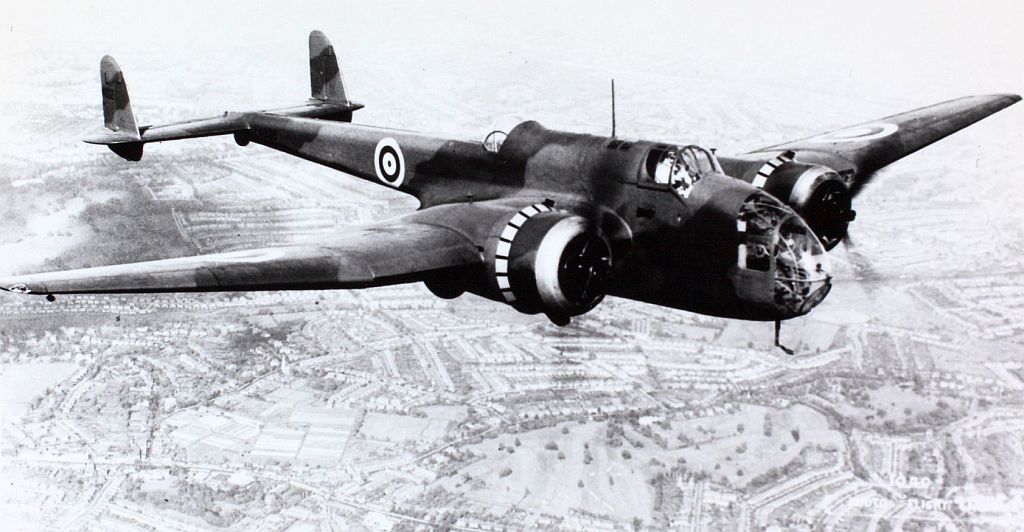
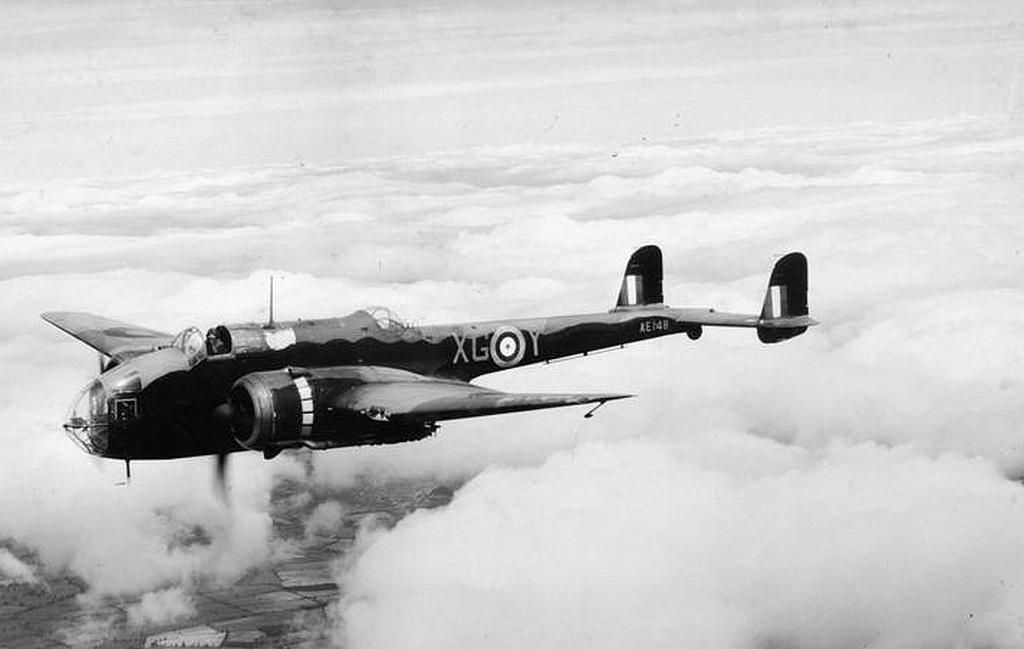
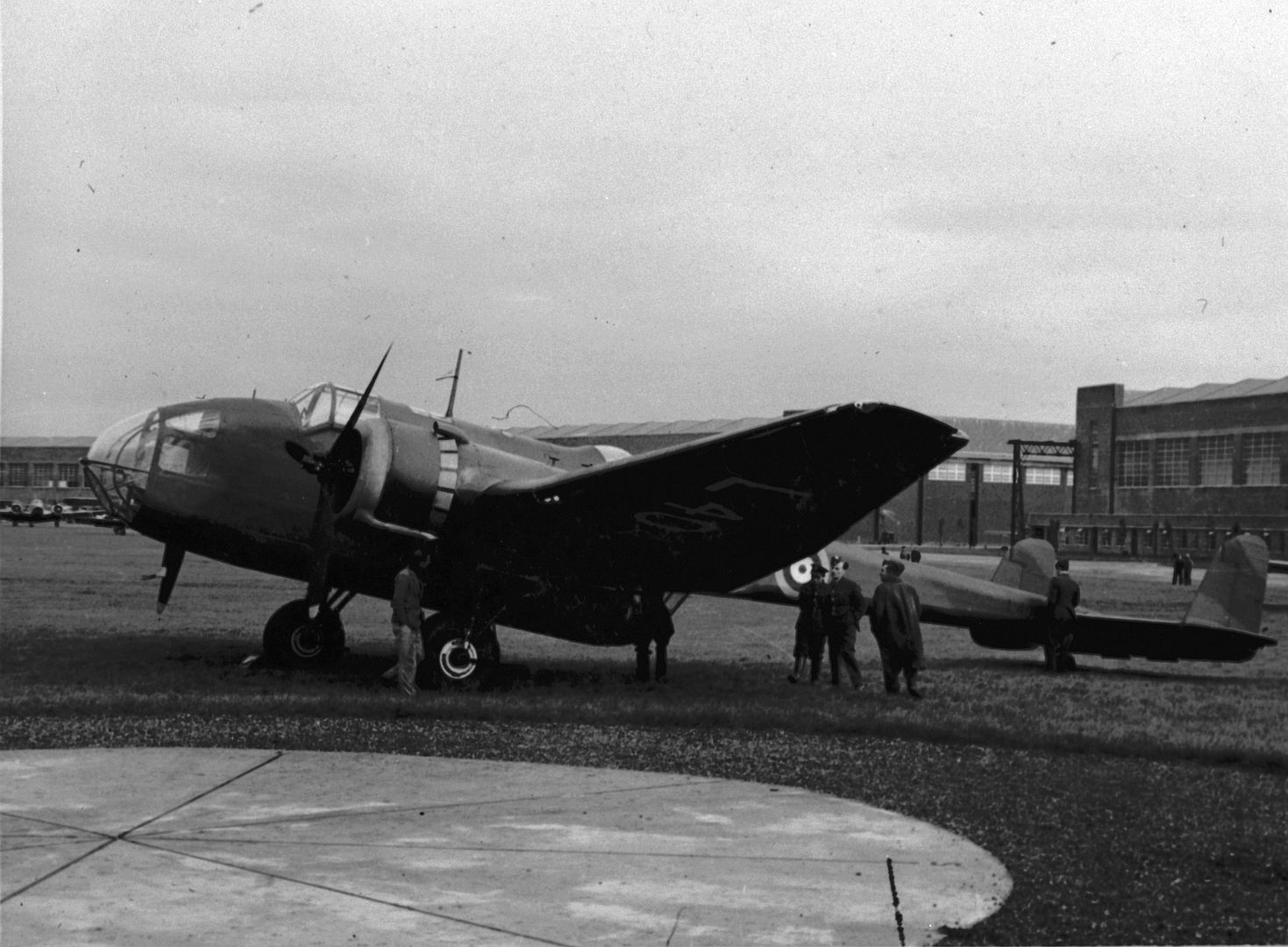
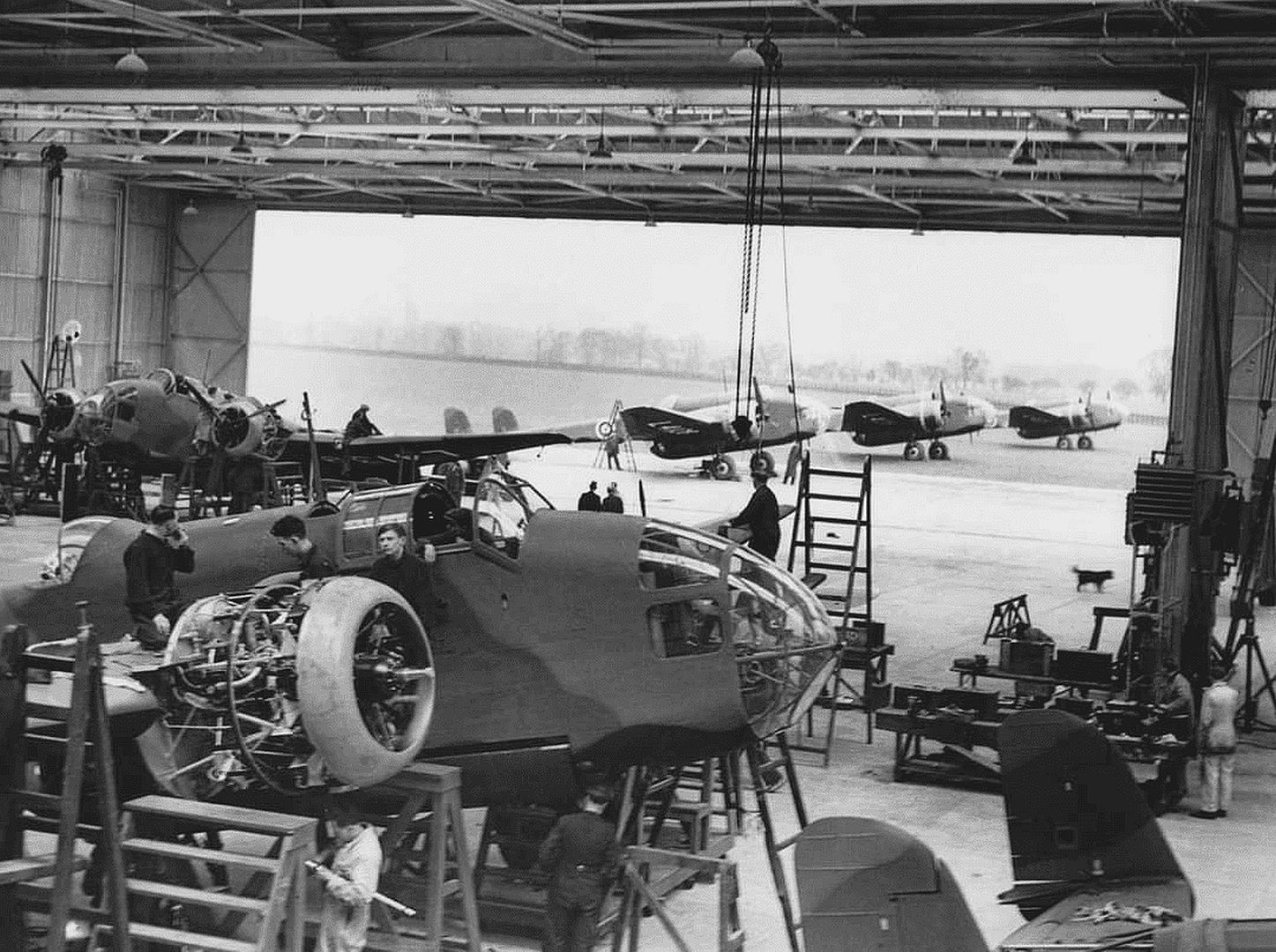
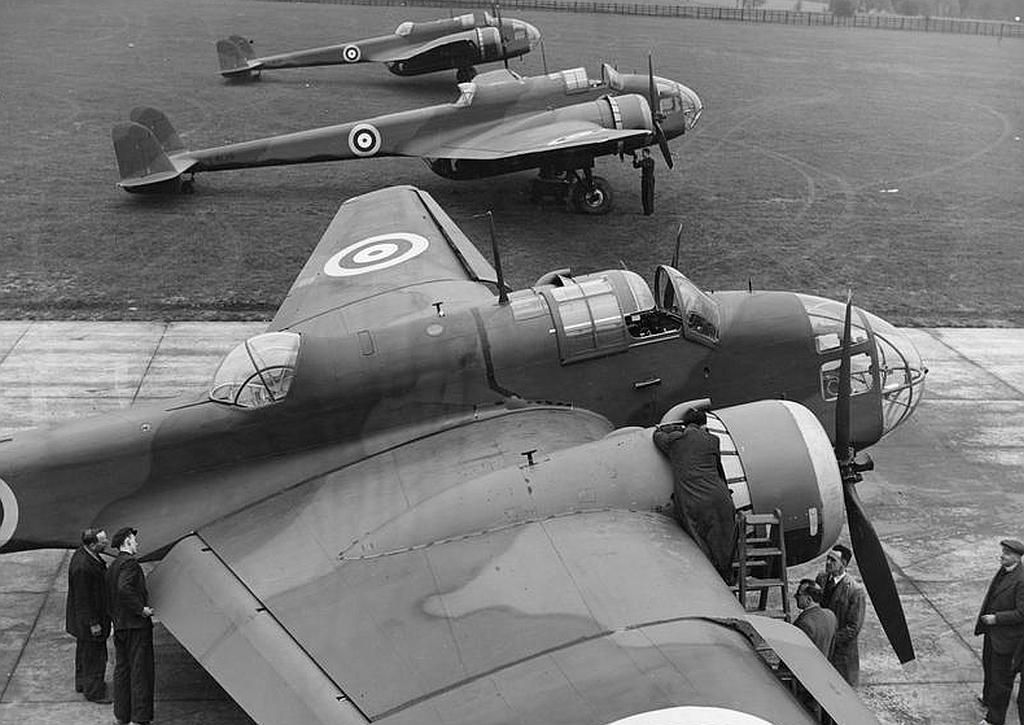
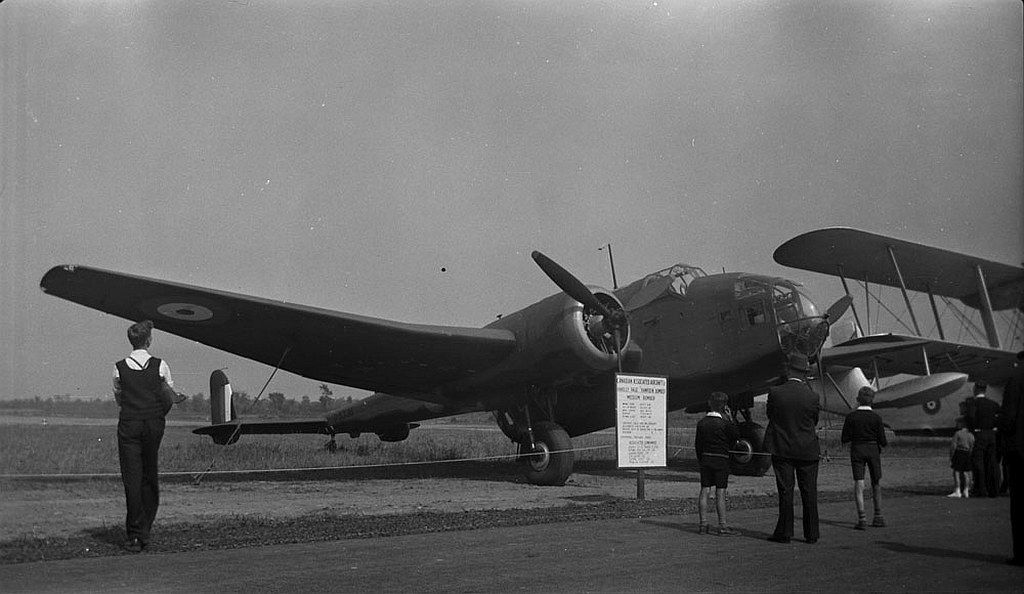
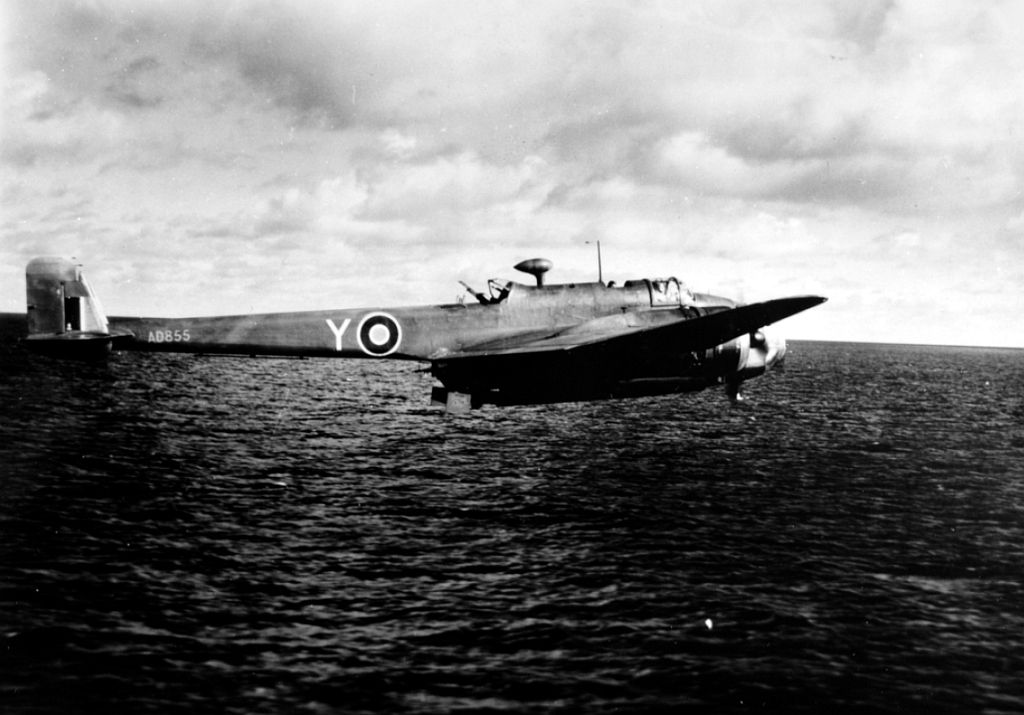

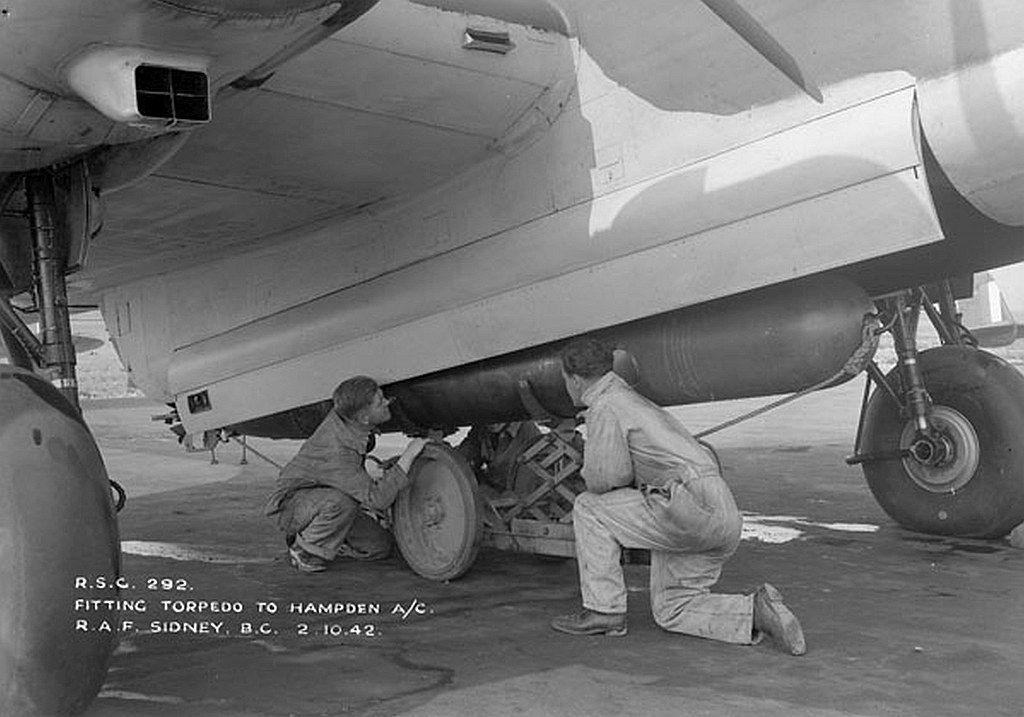
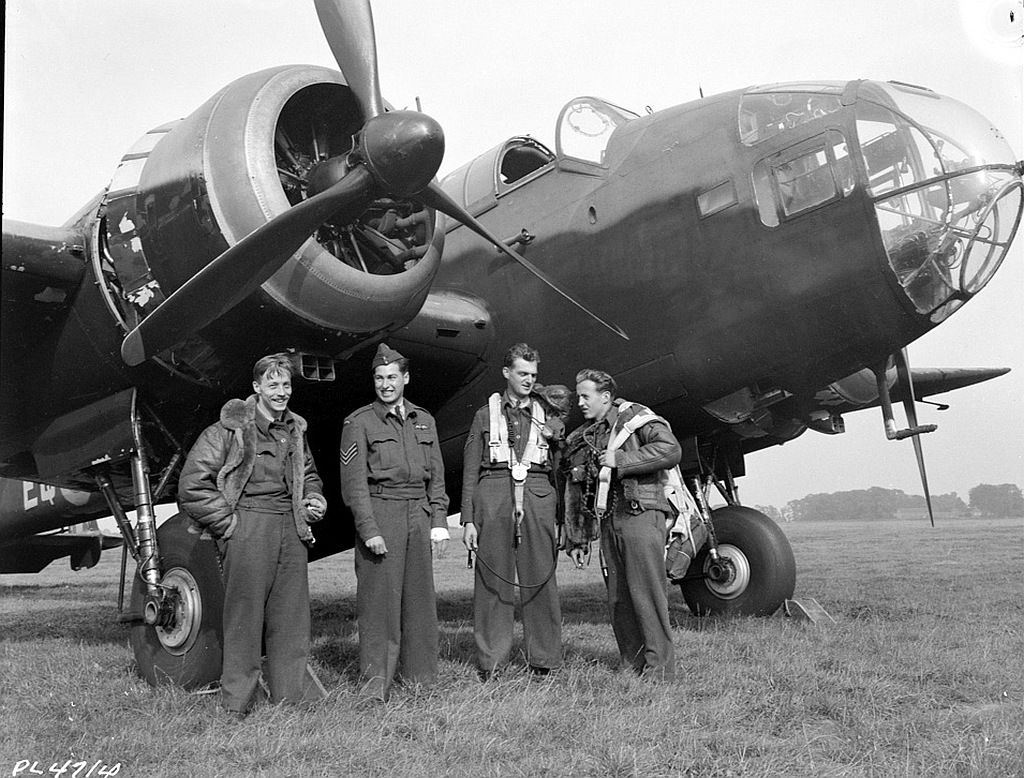
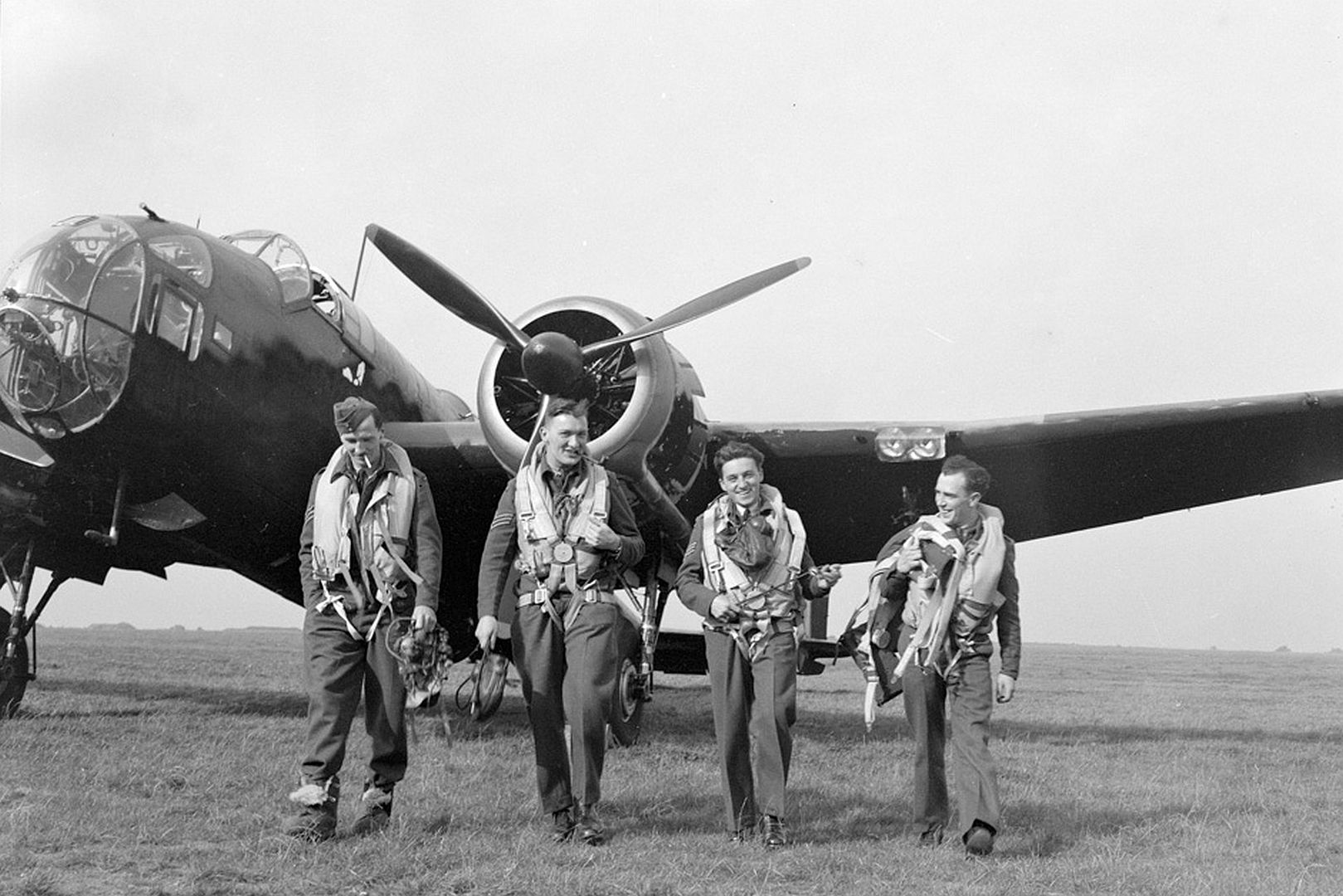
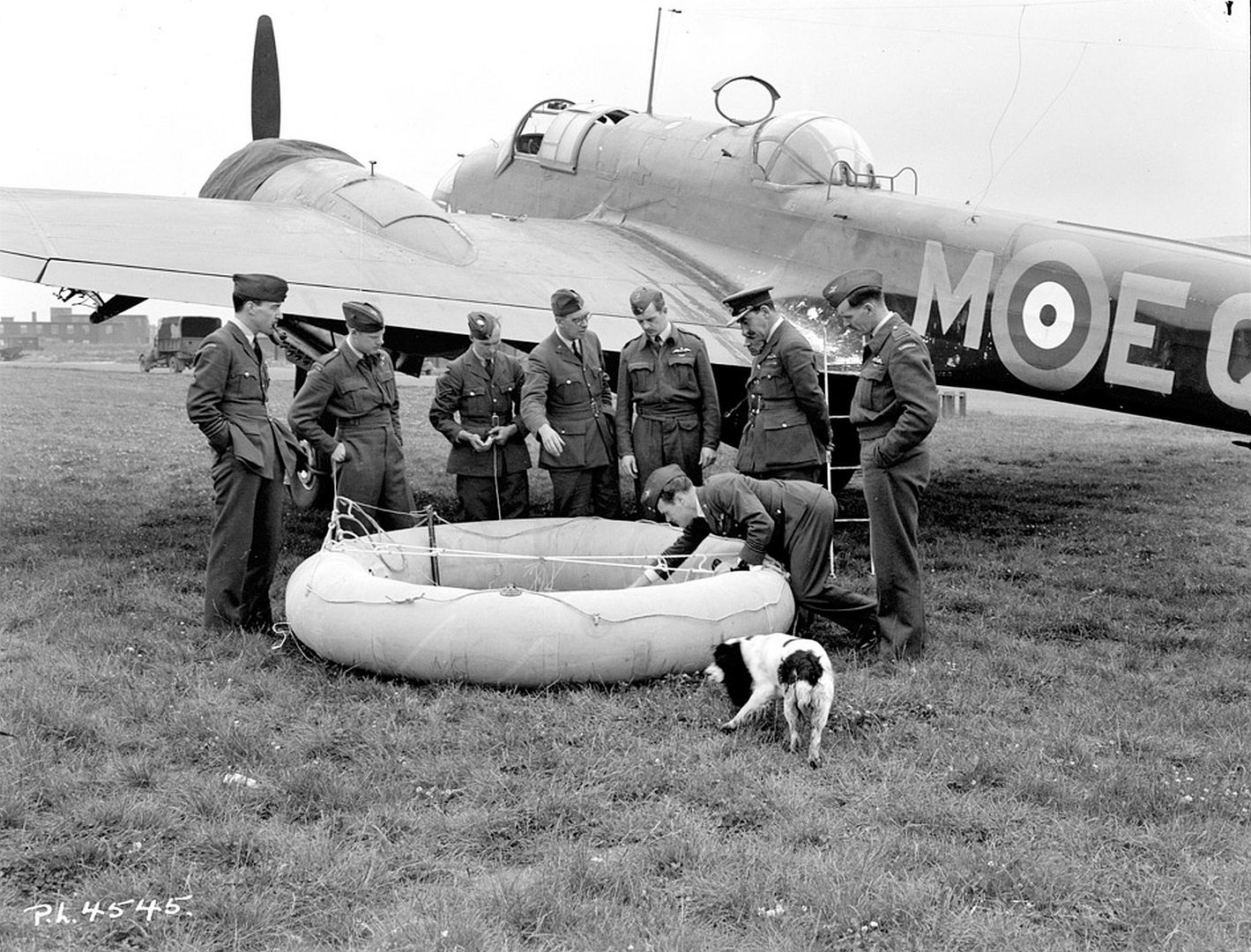

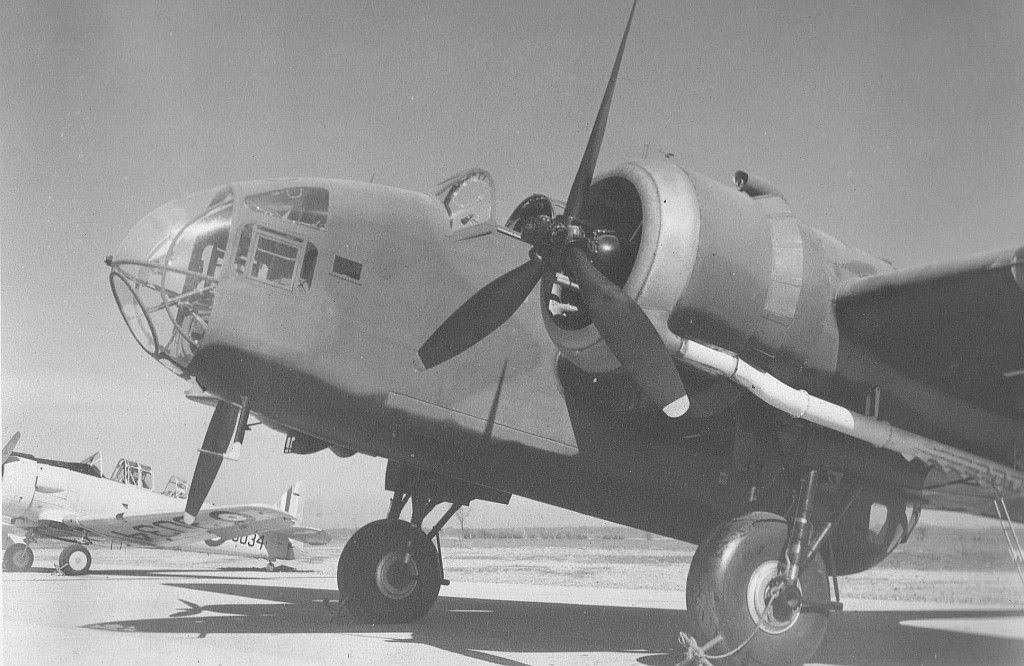

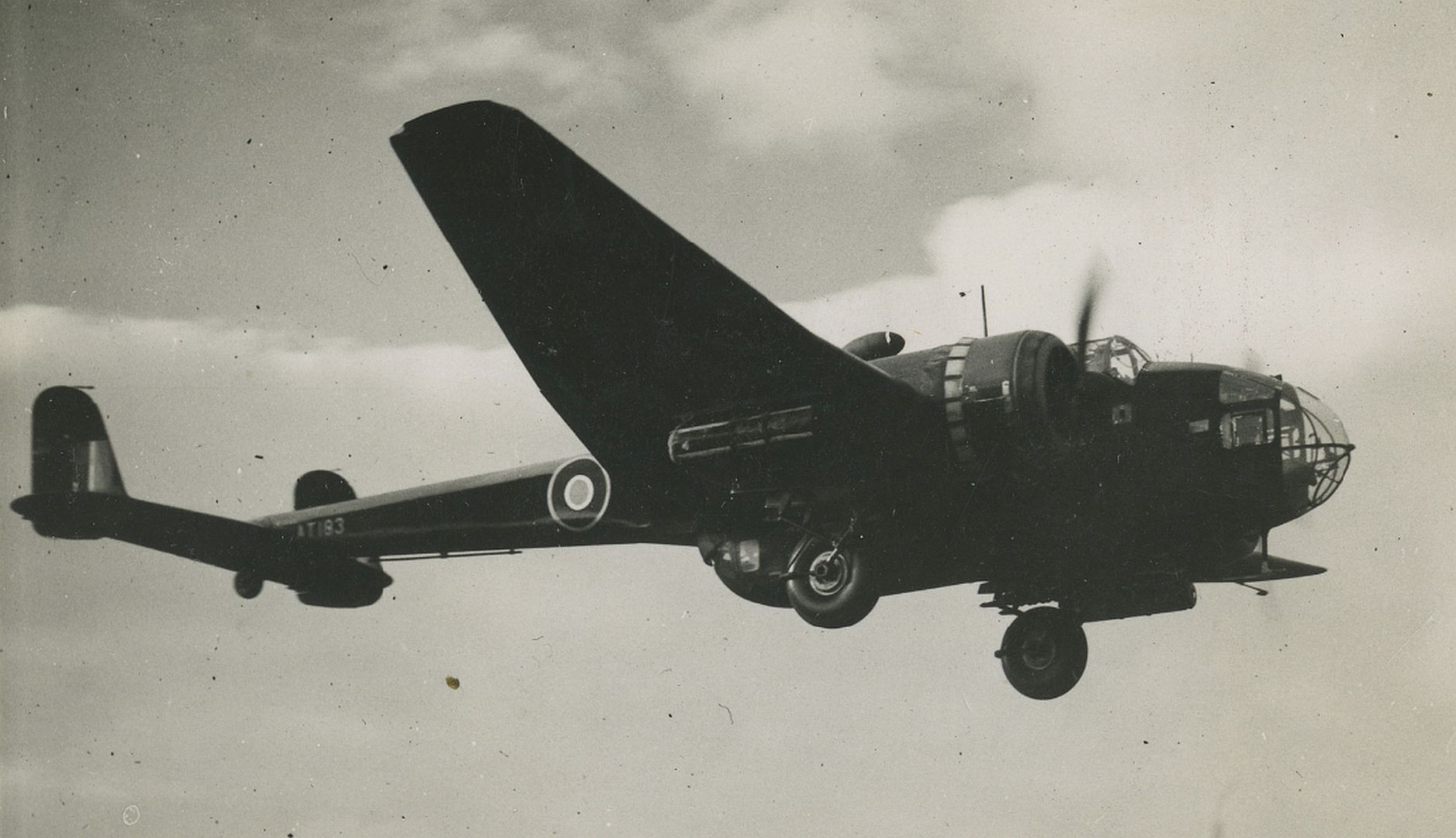
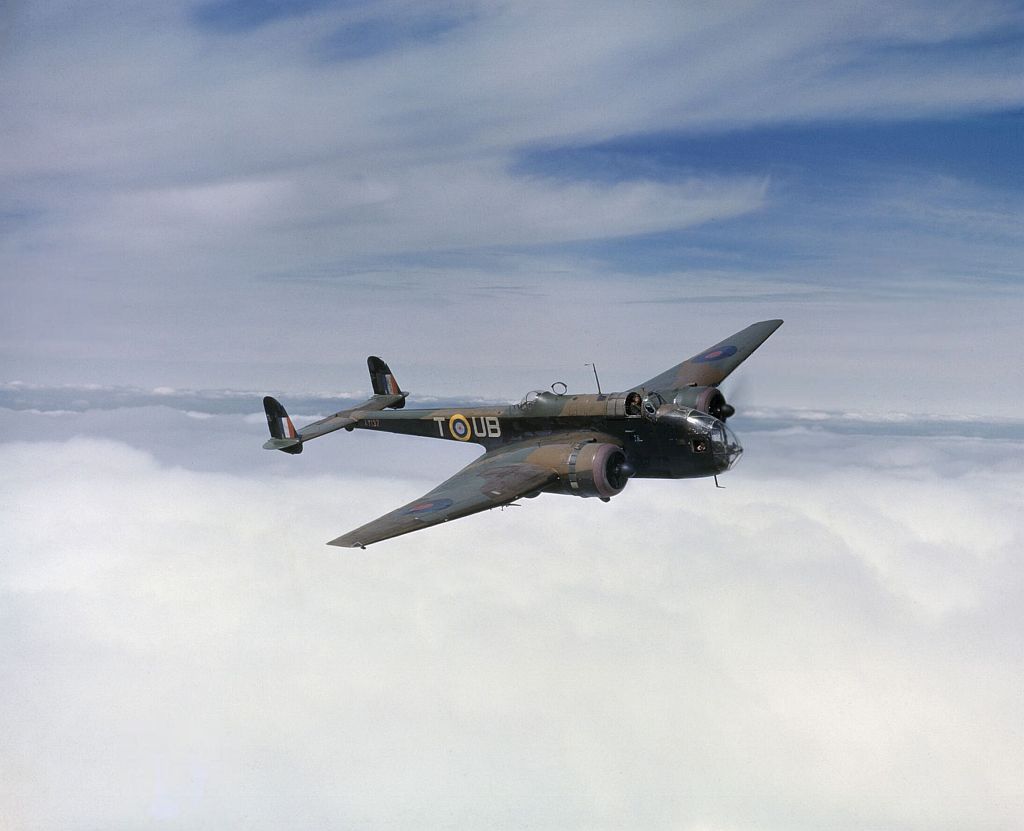
General characteristics
Crew: 4 (pilot, navigator/bomb aimer, radio operator/dorsal gunner, ventral gunner)
Length: 53 ft 7 in (16.32 m)
Wingspan: 69 ft 2 in (21.09 m)
Height: 14 ft 11 in (4.55 m)
Wing area: 668 sq ft (62.1 m2)
Empty weight: 12,764 lb (5,789 kg)
Max. takeoff weight: 22,500 lb (10,206 kg)
Powerplant: 2 ? Bristol Pegasus XVIII 9-cylinder radial engine, 1000 hp (754 kW)at 3,000 feet (910 m) each
Performance
Maximum speed: 247 mph (215 knots, 397 km/h) at 13,800 ft (4,210 m)
Cruise speed: 206 mph (179 knots, 332 km/h) at 15,000 ft (4,580 m)
Range: 1,720 mi (1,496 nmi, 2,768 km) (Max fuel and 2,000 lb (910 kg) bombs, 206 mph (332 km/h))
Service ceiling: 19,000 ft (5,790 m)
Rate of climb: 980 ft/min (300 m/min)
Armament
Guns:
1 ? fixed forward firing .303 in (7.7 mm) M1919 Browning machine gun in nose
3?5 Vickers K machine guns: one flexibly mounted in the nose, one or two each in dorsal and ventral positions
Bombs: 4,000 lb (1,814 kg) bombs or 1 ? 18 in (457 mm) torpedo or mines
Post a reply
- Go to Previous topic
- Go to Next topic
- Go to Welcome
- Go to Introduce Yourself
- Go to General Discussion
- Go to Screenshots, Images and Videos
- Go to Off topic
- Go to Works in Progress
- Go to Skinning Tips / Tutorials
- Go to Skin Requests
- Go to IJAAF Library
- Go to Luftwaffe Library
- Go to RAF Library
- Go to USAAF / USN Library
- Go to Misc Library
- Go to The Ops Room
- Go to Made in Germany
- Go to Campaigns and Missions
- Go to Works in Progress
- Go to Juri's Air-Raid Shelter
- Go to Campaigns and Missions
- Go to Works in Progress
- Go to Skinpacks
- Go to External Projects Discussion
- Go to Books & Resources
